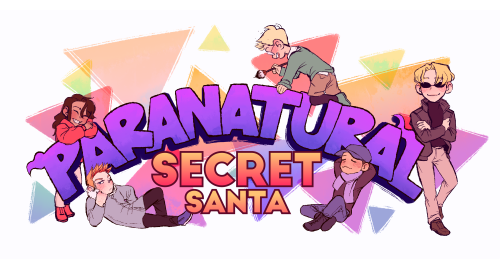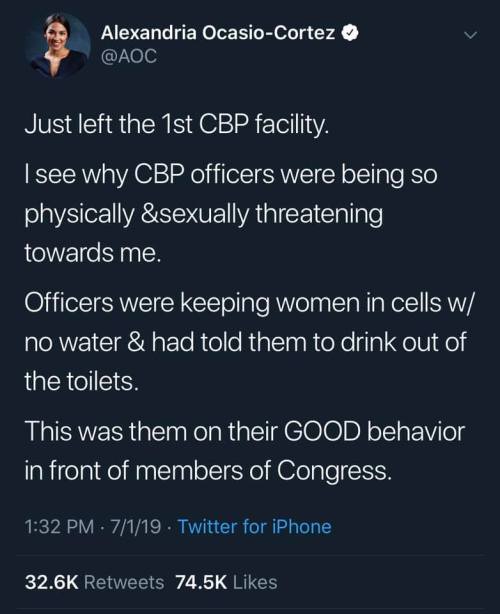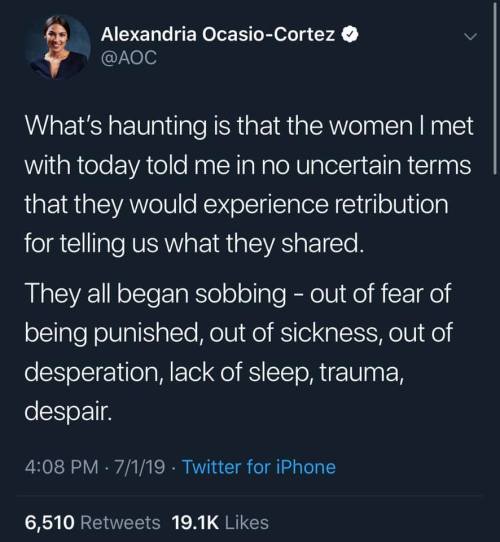#crocodiles #this Is So Cool #evolution #American Crocodile
#crocodiles #this is so cool #evolution #American Crocodile


Miocene Fossil from Africa Provides New Evidence for Origin of American Crocodiles
http://www.sci-news.com/paleontology/crocodylus-checchiai-origin-american-crocodiles-08679.html
More Posts from Gatortavern and Others
ahh, i love seeing the ancient running crocodilians again! It always sucks when i could only remember an image but not the name of it and this came at the best time. Kinda wish there were still running crocs like this around.

graceful gallop

MAJOR NEWS FOR CROCODILE FANS In a newly published paper, Martin et al. describe a new genus of sebecid, Dentaneosuchus from the middle Eocene of France Whats cool about this animal is not just that its part of a group of terrestrial crocodylomorphs, i.e. croc relatives that lived and hunted on land But its also enormous The lower jaw was around 90cm long in the smaller specimen, which puts it in a similar size range as the enormous Barinasuchus from Miocene of South America pictured below (comparisson by Aledgn) this makes it perhaps the biggest land predator of Europe since the extinction of the dinosaurs.

PS: The paper doesn't go into it much, but among the lower estimates is a mere 3-4 meters. While the proportions are unknown, such a low body length seems rather unlikely given that this would mean the head was a whole third of the whole body. 5 to 6 meters seems a lot more reasonable.
this looks incredible. Look at this remarkable gator, just chillin'.

American Alligator - taken at one of the Disney hotels, during the zoo/exotic vet conference appropriately enough some years back
oh heyyy! It’s back baby!

Well, hello dearest Paranatural fandom!
The Paranatural Secret Santa 2020 is finally open for applications!
A time for joy, the secret santa has run since 2015 (on two separate blogs), and this holiday season it comes with a new, fancy look. Sleeker, shinier, sexier, i-can’t-think-of-another-adjective—-!
I hope to welcome back some old participants again, it’s always a pleasure to work with y’all but for the uninitiated:
What’s a secret santa?
A secret santa is a gift exchanging event where you’re assigned a person to make a gift for, and another assigned to make a gift for you. Art, fic, edits, videos, playlists, we’ve had some music composition, anything you can make goes!
Here’s our schedule:
November 1st - November 22nd: Applications are open
November 23rd - November 25th: Applications close, Secret Santas are assigned.
November 26th - December 24th: Make Your Gifts!!
December 25th - January 1st: Posting span.
Still having some doubts? You’re unsure of some things? Check out the FAQ for all of the common questions. Don’t see your particular question? The askbox is always open, I’ll answer as quickly as possible.
Lastly, if these ramblings have convinced to you participate, you can join by filling out this form or submitting the template to the blog.
I’ve gone on for long enough, so, have a nice day and stay safe!
How to write dynamic scenes
Here’s how you can inject some dynamics into your scenes where characters may be idling during their conversations! This is my favourite trick to use when I want to round out a scene.
Sometimes you may have a static scene in your book with characters simply sitting and chatting. So how do you make this more interesting?
The answer is to add in some dynamics!
🤔 What does that mean?
Creating dynamics in a scene means that you add some form of repetitive or changing background element throughout the scene to keep it moving, despite it being in the same spot.
For example, if you have a scene set in a restaurant with two characters having dinner, pick out an element from the setting that could create some kind of dynamic, pressure or conflict to your scene.
✍️ In a restaurant this may be:
An annoying cast of waiters circling around and offering refills
A scorching radiator by the side of the table raising temperature and shortening patience levels
A loud party of people in the background who make it difficult for your characters to understand each other
A partner’s phone buzzing on the table every other minute
A character’s personal tendencies - like fidgeting with the table cloth and eventually unthreading it, or coming close to dropping things until they shatter a glass at a high point of the scene
Think of background elements, or ways to externalise the way your characters are feeling in a particular scene can add so much life to a scene!
It also makes it feel more interesting, dynamic, and immersive, even a scene you’re writing is a simple conversation.
Whenever you find your characters having a conversation while they’re simply walking or sitting, think of whether you can externalise any of their emotions or inject some background element to make the scene more interesting!
Did you hear my first book is coming out August 15th? Pre-order it now through the [link here] or below!


New Species of Ancient Giant Alligator Identified
http://www.sci-news.com/paleontology/deinosuchus-schwimmeri-08730.html

OH RIGHT and I made this little fanart of the croki poki. I love him. I named mine chorizo and he’s such a fantastic singer!







Contact Your Representative and Tell Them To Fight Against Trump’s Camps
Additionally, if you can see if you can donate money to these organizations
Lawyersforgoodgoverment.com
fairfightbondfund.org
lgbtqfund.org
communitybondproject.org
immigrantfamilies.org
freedomforimmigrants.org
The merit of your writing.
So, you’ve read something that has resonated with you. It’s everything you’ve wanted in terms of characters, prose, plot and pace. It’s the best you’ve read in years. You reread your favourite lines. You have to take a break just to absorb every meticulously crafted line. You are in awe of how something so small can seem to take up so much space.
And in a perfect world, it would inspire you to go out and create. To work on that story that is languishing in your save files, to pick up that WIP you abandoned, to make you want to write something different and new and better.
Instead, it makes you feel inferior. The words are too good. You could never write like that. The characters are too perfect. You don’t have that insight. The story is too captivating. Your ideas are boring, cliche, plain. The insight is remarkable. You can barely string a thought together coherently.
Why even bother, you think.
Don’t fall into that trap. I have been there so many times. I have abandoned writing for years because of “why even bother”. I have let it destroy my confidence, only to patch it back up in a cheap imitation of what it once was, just to let it invade my thoughts again. I have questioned every thing I’ve written, every choice, every line, because why even bother if someone is so much better.
YOUR WRITING HAS MERIT. What you don’t realize is that it’s not in terms of better, but different. Different style, different story, different interpretation, different mind.
Someone out there will love the way you describe the night sky in poetry. Someone out there will love the way you describe the look on someone’s face when their heart breaks. Someone out there will love your idea, that strange one that seems impossible or already done, because it’s new and exciting or they love endless amounts of that same story. Someone out there will love your interpretation of that character, whether more gentle or bitter or broken or healed. Someone out there will love the words you write, the grandiose use of adverbs (my guilt) or the minimal scattering of dialogue. Someone out there will love your abundance or lack of something you saw in that story you so loved, the one that rendered you speechless and snuffed out your fire.
Someone out there will love your words. And you need to share them.
Speaking as a writer, no one sets out to create something to discourage others. No one wants to dominate their corner and be the only one there. No one wants to be alone in their craft. If they do, they are doing it for the wrong reasons. Speaking as a writer, I would never want you to read my writing and think, why bother.
I want you to think, why bother waiting?
Your story matters. Your writing matters. It’s beautiful and defined and gorgeous and a work in progress and growing and already there and insightful and mysterious: it all has merit.
Never stop. Never stop writing and practicing and doing and creating and learning and loving the words you weave.
You may think someone has done it more beautifully or better or too many times or never because who wants to read it?
They maybe have done all those things, but they lack one thing: they haven’t done it like you have.
Exploring the Marvels of Biological Macromolecules: The Molecular Machinery of Life (Part 3)
Proteins and Enzymes: Catalysts of Molecular Reactions
Proteins are the central players in macromolecular interactions. Enzymes, a specialized class of proteins, catalyze biochemical reactions with remarkable specificity. They bind to substrates, facilitate reactions, and release products, ensuring that cellular processes occur with precision.
Protein-Protein Interactions: Orchestrating Cellular Functions
Proteins often interact with other proteins to form dynamic complexes. These interactions are pivotal in processes such as signal transduction, where cascades of protein-protein interactions transmit signals within cells, regulating diverse functions such as growth, metabolism, and immune responses.
Protein-Ligand Interactions: Molecular Recognition
Proteins can also interact with small molecules called ligands. Receptor proteins, for instance, bind to ligands such as hormones, neurotransmitters, or drugs, initiating cellular responses. These interactions rely on specific binding sites and molecular recognition.
Protein-DNA Interactions: Controlling Genetic Information
Transcription factors, a class of proteins, interact with DNA to regulate gene expression. They bind to specific DNA sequences, promoting or inhibiting transcription, thereby controlling RNA and protein synthesis.
Membrane Proteins: Regulating Cellular Transport
Integral membrane proteins participate in macromolecular interactions by regulating the transport of ions and molecules across cell membranes. Transport proteins, ion channels, and pumps interact precisely to maintain cellular homeostasis.
Cooperativity and Allosteric Regulation: Fine-Tuning Cellular Processes
Cooperativity and allosteric regulation are mechanisms that modulate protein function. In cooperativity, binding one ligand to a protein influences the binding of subsequent ligands, often amplifying the response. Allosteric regulation occurs when a molecule binds to a site other than the active site, altering the protein's conformation and activity.
Interactions in Signaling Pathways: Cellular Communication
Signal transduction pathways rely on cascades of macromolecular interactions to transmit extracellular signals into cellular responses. Kinases and phosphatases, enzymes that add or remove phosphate groups, play pivotal roles in these pathways.
Protein Folding and Misfolding: Disease Implications
Proteins must fold into specific three-dimensional shapes to function correctly. Misfolded proteins can lead to Alzheimer's, Parkinson's, and prion diseases. Chaperone proteins assist in proper protein folding and prevent aggregation.
References
Voet, D., Voet, J. G., & Pratt, C. W. (2016). Fundamentals of Biochemistry: Life at the Molecular Level. Wiley.
Lehninger, A. L., Nelson, D. L., & Cox, M. M. (2017). Lehninger Principles of Biochemistry. W. H. Freeman.
Berg, J. M., Tymoczko, J. L., & Stryer, L. (2002). Biochemistry. W. H. Freeman

-
 boudicca-of-iceni reblogged this · 4 years ago
boudicca-of-iceni reblogged this · 4 years ago -
 thistlechild reblogged this · 4 years ago
thistlechild reblogged this · 4 years ago -
 cripple-cat liked this · 4 years ago
cripple-cat liked this · 4 years ago -
 gnothiseautonpathology reblogged this · 4 years ago
gnothiseautonpathology reblogged this · 4 years ago -
 poorrichardjr liked this · 4 years ago
poorrichardjr liked this · 4 years ago -
 wave-form liked this · 4 years ago
wave-form liked this · 4 years ago -
 mimir-anoshe reblogged this · 4 years ago
mimir-anoshe reblogged this · 4 years ago -
 mimir-anoshe liked this · 4 years ago
mimir-anoshe liked this · 4 years ago -
 sprintingbear liked this · 4 years ago
sprintingbear liked this · 4 years ago -
 kingofkhemet reblogged this · 4 years ago
kingofkhemet reblogged this · 4 years ago -
 kingofkhemet liked this · 4 years ago
kingofkhemet liked this · 4 years ago -
 climate-changing liked this · 4 years ago
climate-changing liked this · 4 years ago -
 olmosred liked this · 4 years ago
olmosred liked this · 4 years ago -
 coonazz74 liked this · 4 years ago
coonazz74 liked this · 4 years ago -
 naturalistadibordo liked this · 4 years ago
naturalistadibordo liked this · 4 years ago -
 jose-rossetti liked this · 4 years ago
jose-rossetti liked this · 4 years ago -
 ereh-emanresu-tresni reblogged this · 4 years ago
ereh-emanresu-tresni reblogged this · 4 years ago -
 ereh-emanresu-tresni liked this · 4 years ago
ereh-emanresu-tresni liked this · 4 years ago -
 pinkbalrog reblogged this · 4 years ago
pinkbalrog reblogged this · 4 years ago -
 pinkbalrog liked this · 4 years ago
pinkbalrog liked this · 4 years ago -
 creaturebrandishingalittleteacup reblogged this · 4 years ago
creaturebrandishingalittleteacup reblogged this · 4 years ago -
 creaturebrandishingalittleteacup liked this · 4 years ago
creaturebrandishingalittleteacup liked this · 4 years ago -
 intelligentliving reblogged this · 4 years ago
intelligentliving reblogged this · 4 years ago -
 rydog888 liked this · 4 years ago
rydog888 liked this · 4 years ago -
 kiretto-laorentze liked this · 4 years ago
kiretto-laorentze liked this · 4 years ago -
 aurumdrake liked this · 4 years ago
aurumdrake liked this · 4 years ago -
 pewterkat liked this · 4 years ago
pewterkat liked this · 4 years ago -
 gatortavern reblogged this · 4 years ago
gatortavern reblogged this · 4 years ago -
 djmcravin liked this · 4 years ago
djmcravin liked this · 4 years ago -
 bioluum liked this · 4 years ago
bioluum liked this · 4 years ago -
 strawbebbypawz liked this · 4 years ago
strawbebbypawz liked this · 4 years ago -
 relatablepicturesofgarnet liked this · 4 years ago
relatablepicturesofgarnet liked this · 4 years ago -
 j-grange liked this · 4 years ago
j-grange liked this · 4 years ago -
 translucent-serendipity liked this · 4 years ago
translucent-serendipity liked this · 4 years ago -
 deathalopod reblogged this · 4 years ago
deathalopod reblogged this · 4 years ago -
 deathalopod liked this · 4 years ago
deathalopod liked this · 4 years ago -
 wisent15 liked this · 4 years ago
wisent15 liked this · 4 years ago -
 elbrujodeladumpster reblogged this · 4 years ago
elbrujodeladumpster reblogged this · 4 years ago

A Cozy Cabana for Crocodiles, Alligators and their ancestors. -fan of the webcomic Paranatural, Pokemon, Hideo Kojima titles -updates/posts infrequently
237 posts